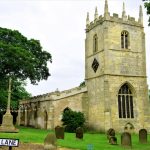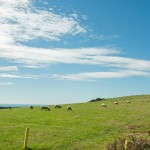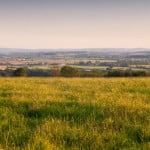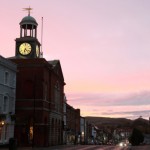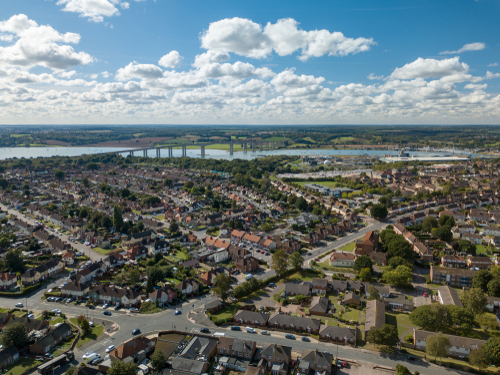
A quick guide to Ipswich
Ipswich is a large urban settlement and the county town of Suffolk. Located in the East Anglia region of England, the town lies some 66 miles (106 km) northeast of London and is situated on the banks of the River Orwell. Ipswich is considered by many to be England’s oldest town, as it has been continuously settled since early Anglo-Saxon times. At the 2011 UK Census, the population of Ipswich was recorded as 133,384.
A Fleeting History
Although the Romans were active in the region, it was the 7th century Anglo-Saxons who were the first to settle in the Ipswich Area. Historically known as Gyppewicus and Yppswyche, the modern name of ‘Ipswich’ is derived from its medieval name of Gippeswic. In turn, that designation is thought to have most likely been derived from the name of the settlement’s first Saxon leader ‘Gippe’, and ‘wic’ which meant port.
The Anglo-Saxons brought with them their weaving skills and Ipswich soon began to prosper through international trade. Ideally located for commercial exchange with Western Europe, Ipswich imported whetstones and millstones from Germany, while exporting wool.
At the beginning of the 8th century, migrant potters from the Netherlands came to settle in Ipswich, setting up England’s first large-scale potteries. Their products were traded across England, while the industry stayed unique to Ipswich for more than 200 years. Ipswich’s growing prosperity made the town a place of growing national and international importance. As early as 720 AD, a new town was laid out in the Buttermarket area.
In 869 AD, the Viking invasion of England’s East coast saw Ipswich fall under Danish rule. The Danes managed to occupy Ipswich until 917 when it was then recaptured by the English. In the 970s, the town established a mint under royal licence from King Edgar. The mint operated throughout the Norman invasion up until the early 13th century.
In 1200, King John granted the town its first charter, guaranteeing the townspeople certain rights. Ipswich now had its own courts and two elected officials who ran the town’s day to day business. By this time, Ipswich was noted for the manufacture of woollen cloth, leatherworking and brewing. The town also had weekly markets at Corn Hill and the Buttermarket, as well as an annual fair. By the end of the 13th century, the shipbuilding industry had also begun to flourish in the town.
Around 1380, famed medieval author Geoffrey Chaucer satirised Ipswich’s well-to-do merchants in his renowned book ‘Canterbury Tales’. In 1473, Thomas Wolsey, the future eminent Cardinal Wolsey and confidant of Henry VIII, was born in Ipswich as the son of a local butcher. In 1528, he founded a college in the town.
During the 1630s, Ipswich became one of the main ports of embarkation for Puritans looking to escaping religious persecution by emigration to the ‘New World’. The mass exodus by pilgrims to what became known as New England (USA), was dubbed the ‘Great Migration’.
In 1797, Admiral Horatio Nelson and his wife, Frances, moved to the town, buying Roundwood House. And in 1800, national hero Nelson was duly appointed High Steward of Ipswich. However, Nelson actually spent little time in Ipswich – even when not at sea. It seemed he much preferred the company of his mistress, Lady Hamilton, over that of his wife. In 1801, Lord and Lady Nelson finally went their separate ways, with the house being sold for £3,300.
During the 19th century, Ipswich grew to be a major industrial centre. Iron foundries began to manufacture farm machinery and railway parts. Other industries included shipbuilding, brewing, printing, milling and tobacco, along with the production of bricks, cement and textiles. Consequently, Ipswich grew rapidly during the period; the 1801 population of around 11,000 had trebled to 33,000 by 1851. It then doubled to some 66,000 by the end of the century.
While Ipswich had peaked as a major international maritime destination, the port was still thriving through domestic trade. In 1842, an extensive wet dock opened to facilitate the town’s booming shipping industry. At that time, it was the largest enclosed dock in the country.
Life in Victorian Ipswich was gradually improving. From 1818, the town had gaslighting, a police force from 1836, a museum from 1847, and a new town hall in 1868. From 1880, horse-drawn trams ran in the town’s streets, which were replaced by an electric tram service in 1903 (which ended in 1926).
During WWI Ipswich was subject to two bombings by German Zeppelins. There were no casualties in the first raid of 1915 but there was one fatality in the 1916 bombing.
During the 1920s and 1930s, slum clearance began in Ipswich and the first council houses were built.
The German bombing raids of the 2nd World War, by the Luftwaffe, proved far more devastating than those of WWI. Eighty civilians were killed in the Ipswich county borough area during the second conflict. The last bombs fell on Seymour Road on 2 March 1945, killing 9 people and destroying 6 houses.
The Modern Era
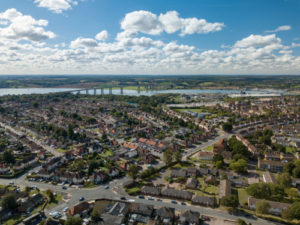
Image: Darius Sul/Shutterstock.com
During the 20th century the traditional industries in Ipswich such as making farm machinery, shipbuilding and brewing all declined but new service industries came to replace them, including tourism. Ipswich now enjoys around 3.5 million visitors, annually.
In 1974, the town’s contemporary glass-fronted Willis Building, designed by Norman Foster, and opened. Grade I listed since 1991, it was the newest building in the country to achieve the coveted status. It is now a ranks as one of the city’s many major tourist attractions.
Today, Ipswich is very much a regional shopping hub. Central is home to one of the town’s main retail shopping area’s and the town square, the Cornhill. However, there’s also the Tower Ramparts and the Buttermarket shopping centres, which were opened in the 1990s.
Ipswich has also experienced a building boom since the dawn of the new century. Since 2000, construction and regeneration have mainly been concentrated around the former industrial docklands area. Now known as the Ipswich Waterfront, the area boasts fine dining restaurants, trendy pubs and boutique hotels, and is also home to one of the UK’s newest universities, the University of Suffolk. The area also has a picturesque marina and a number of luxury high-rise apartment blocks.
Ipswich has been twinned with France Arras, France since 1994.
Getting there!
By Road
The A14 and the A12 are the two main arterial roads into Ipswich. Travelling from the North and West you can get to Ipswitch via the M1 or A1(M) and the A14. From the South-east area, including London take the A12. The Orwell Bridge carries the A14 road over the River Orwell is highly important for regional connectivity with the rest of the country.
By Bus
Bus services in the town are operated by Ipswich Buses, First Norfolk & Suffolk and several smaller companies. Town services mainly operate from Tower Ramparts bus station and regional services, operated by National Express, from the recently refurbished Old Cattle Market bus station.
By Rail
There are two railway stations, Ipswich and Derby Road. Train services are run by Greater Anglia, which operates direct services to regional cities that includes London, Cambridge, Norwich and Peterborough. It also lies on the East Suffolk line to Lowestoft and is the terminus station on the Felixstowe branch line.
By Air
The nearest airport to Ipswich is London Stansted (STN), which is around 40 miles away and an hour’s drive away.
Famous People
Some famous people who were born and/or lived in Ipswich are:
- Thomas Wolsey (1475-1530) – born in Ipswich and deemed the town’s most famous resident. He was better known as Cardinal Wolsey, Henry VIII’s Lord Chancellor and was ranked second only to the king in importance during his time.
- Thomas Gainsborough (1727-1788) – one of Britain’s greatest portrait and landscape artists grew up in Ipswich.
- Alf Ramsey (1920 – 1999) – England footballer and manager. He famously managed the England team to a world cup victory in 1966. He also managed Ipswich F.C. with great success between 1956 and 1962. He settled in Ipswich in retirement and lived there to his death in 1999.
- Bobby Robson (1933 – 2009) – England footballer and manager. He managed the England team for 8 years during the 1980s, reaching the World Cup semi-finals in 1990. He also managed Ipswich F.C. with great success between 1969 and 1982. He also went on to achieve international success as a manager with several teams, winning great respect throughout the football world.
Did you know?
- In 1832, Ipswich based company JR & A Ransome were the first firm in the world to commercially manufacture the lawnmower
- Suffolk born Eric Arthur Blair, better known as author George Orwell, took his name from Ipswich’s Orwell River
- Ipswich often cited as England’s oldest town, is around 1,400 years old
- Ipswich was one of the first towns to be seized during Great Britain’s invasion by the Vikings
Things to see and do!
Just some of the things to see and do in Ipswich are:
- Christchurch Park – opened in 1895, it has 70 acres of landscaped lawns and two arboretums, which are planted with exotic trees
- Christchurch Mansion – Grade I-listed Manor House dating back to Tudor times. Superb displays of fine art and artefacts from Georgian and Victorian Eras as well as paintings by Thomas Gainsborough and John Constable.
- Ipswich Museum – charts the town and Suffolk’s heritage and natural history from Anglo-Saxon to date.
- Ipswich Waterfront – the quayside was refurbished in the late 1990s. As well as eateries, bars and restaurants, it has Grade II-listed old Custom House and 250-berth Marina.
- The Ancient House – owned by Ipswich Borough Council and restored in the 1980s, it’s was a wealthy merchant’s residence constructed during the 14th century
- Holywells Park – a swathe of greenery, its 28 hectares of lawns, woodland and ponds.
- St Mary Le Tower – this civic church on Tower St., dates back to the 11th century, during the reign of Edward the Confessor.
- Ipswich Transport Museum – houses more than 100 vehicles belonging to local transport operators. Other vintage modes of transport on show, include wheelchairs, prams, bicycles, fire engines, mobile cranes, buses, trolleybuses and trams are all displayed. Open on Sundays from April to November, and weekday afternoons during the school holidays.
- Regent Theatre – largest performing arts venue in East Anglia. Has a programme that will appeal to all tastes, booking famous comedians, touring musicals, classic pop musicians and classical concerts by the likes of the Royal Philharmonic Orchestra.
- Portman Road – home to Suffolk’s only professional football club, Ipswich Town F.C., who currently play in the Championship, the 2nd tier of English football. On average you’ll catch a game there every ten days or so from August to May. You can just show up on match days, as Ipswich games are rarely sold out.
- Sutton Hoo – 10 miles from Ipswich, it’s the site of two Anglo-Saxon cemeteries dating back to 6th and 7th century.
Where to stay?
There’s accommodation in Ipswich to suit most tastes and budgets. A broad indication of prices for commonly available accommodation in the area is:
B & B/Guesthouses/Standard Hotels: £50 – £90
3/4/5 Star Hotels: £90 – £150
Holiday Home/Apartments: £100 – £500 (up to 6 adults sharing)

